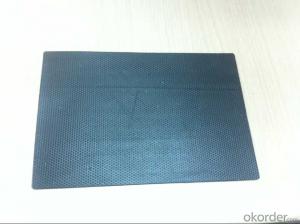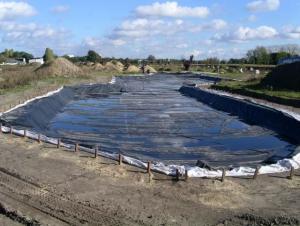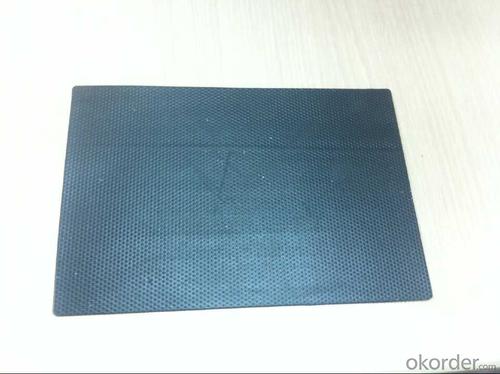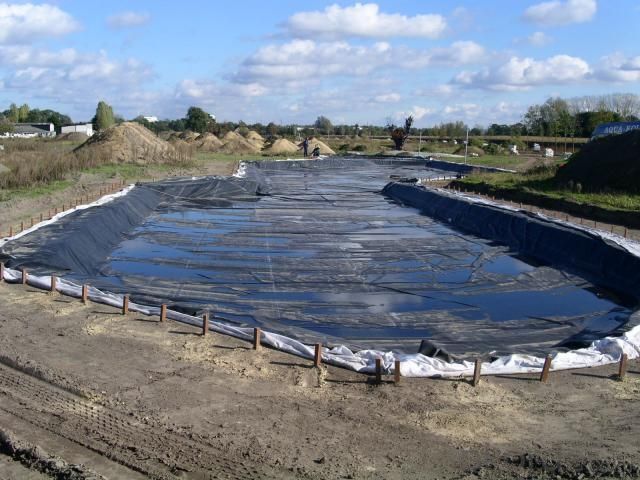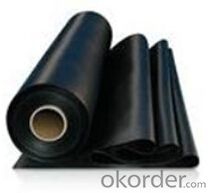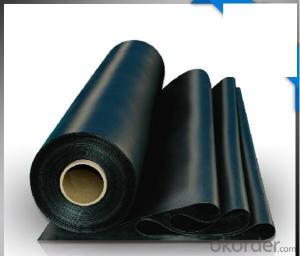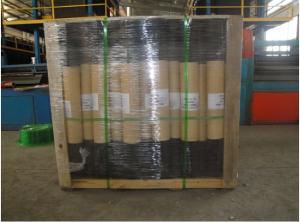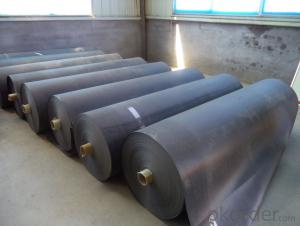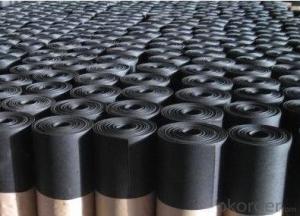EPDM roof /pond/basement waterproof membrane manufacturer
- Loading Port:
- Qingdao
- Payment Terms:
- TT or LC
- Min Order Qty:
- 1000 m²
- Supply Capability:
- 100000 m²/month
OKorder Service Pledge
OKorder Financial Service
You Might Also Like
EPDM Coiled Rubber Waterproof Membrane for Ponds
Description Of EPDM Rubber Waterproof Membrane:
1. EPDM waterproof membrane is made from ternary ethylene-propylene rubber, which is for waterproofing of exposed and non-exposed applications.
2. EPDM waterproof membrane production adopts the world-advanced equipment of cold feeding extrusion and continuous vulcanization technology.
3. EPDM waterproof membrane is of high elasticity among high polymer waterproof materials and becomes a world-popular waterproofing material.
Main Features of EPDM Rubber Waterproof Membrane:
1. Excellent physical and mechanical performance
2. High tearing resistance
3. Good deformation adaptability
4. High puncture resistance
5. High aging resistance
6. UV resistance
Specifications of EPDM Rubber Waterproof Membrane:
Material | EPDM Rubber |
Size | 1.2m (width)*20m (length) or customized, weldable type 2.05m or 4m width |
Thick | 1.2mm, 1.5mm, 2.0mm |
Type | Vulcanized & Weldable |
Pattern | Non-reinforced (homogeneous) |
Certificate | ISO9001/14001 |
Applications of EPDM Rubber Waterproof Membrane:
1.Roofs, Basement, Toilets
2. Industrial and civil building waterproofing
3. Geosynthetic liner for swimming pool, channels, irrigation system
4. Especially suitable for projects with high requirements in durability, anti-corrosion and deformation.
IMages of EPDM Rubber Waterproof Membrane:

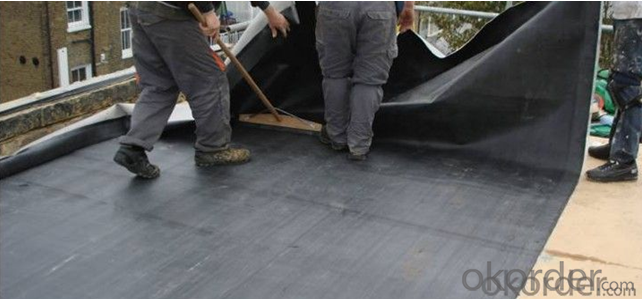
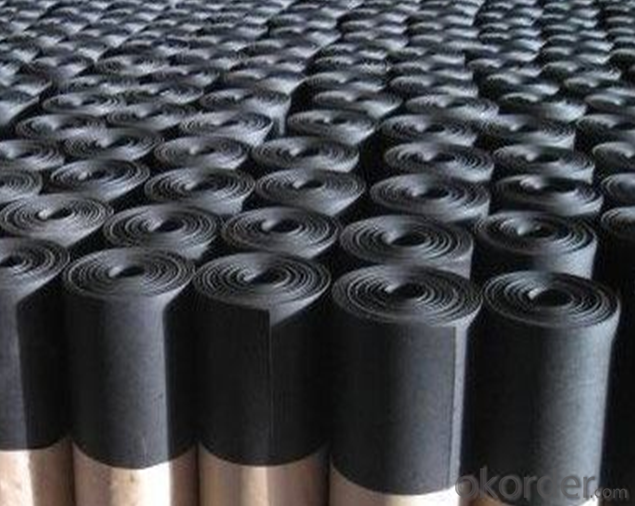
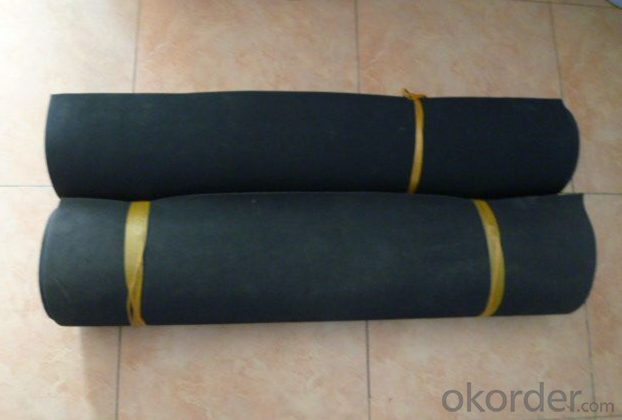
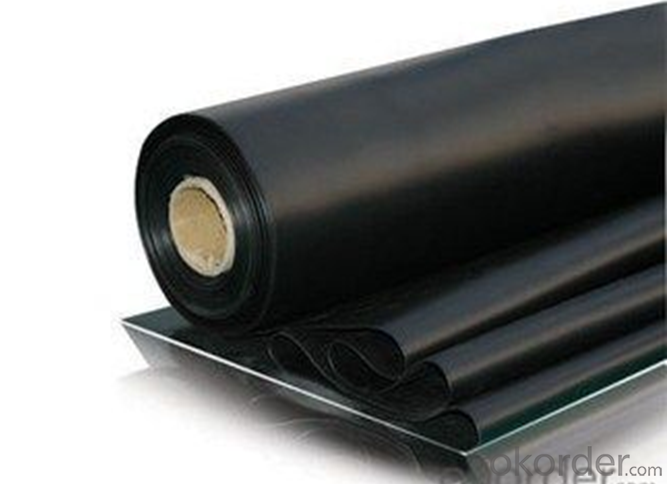
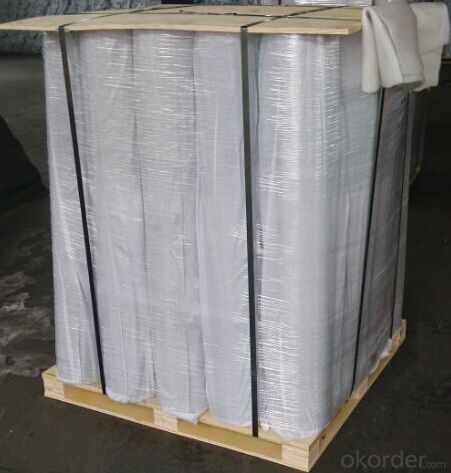
FAQ:
1. What are we supplying?
We are specialized in producing Colorful Asphalt Roof Shingle, SBS/APP modified bitumen waterproof membrane, Self adhesive bitumen waterproof membrane, PVC waterproofing membrane, EPDM rubber roofing membrane, Single Component Polyurethane Waterproof Coating, and Spray Polyurea Waterproof Coating
.
2. How Many years experience do we have?
We have been exported to more than 20 countries in the past 15 years.
3. How long do we usually reply your request?
We always reply our customer within 24 hours.
- Q: Can a waterproofing membrane be used in conjunction with fire protection systems?
- Indeed, the utilization of a waterproofing membrane in tandem with fire protection systems is possible. Although the primary function of a waterproofing membrane is to prevent water infiltration, it can also serve as an additional safeguard against fire hazards. Numerous waterproofing membranes are engineered to possess fire-resistant qualities or exhibit fire-retardant characteristics. Consequently, they aid in impeding the spread of fire and minimizing its impact on the edifice. Furthermore, certain waterproofing membranes are specifically tailored for integration into fire protection systems, such as fire-rated roof membranes or fire-resistant sealants. These specialized membranes effectively seal off potential avenues for fire and establish a barrier to safeguard the underlying structure. In summary, the incorporation of a waterproofing membrane alongside fire protection systems contributes to the overall enhancement of a building's safety and security.
- Q: Can a waterproofing membrane be used for a balcony deck coating?
- Yes, a waterproofing membrane can be used for a balcony deck coating. Waterproofing membranes are often used to protect and seal balconies and decks from water damage, providing a durable and long-lasting solution.
- Q: Can a waterproofing membrane be used for laboratories or research centers?
- Laboratories or research centers can benefit greatly from utilizing a waterproofing membrane. These membranes are specifically designed to create a barrier against water and moisture, effectively preventing any infiltration that could potentially damage the structure. Given the presence of sensitive equipment, valuable specimens, and crucial data in these environments, it becomes imperative to uphold a controlled atmosphere that is completely free from any moisture. To ensure that water leaks do not occur, a waterproofing membrane can be applied to various surfaces, including floors, walls, and roofs. This application serves to safeguard the equipment, ward off potential hazards, and preserve a safe working environment. Moreover, the presence of a waterproofing membrane aids in the prevention of mold growth, which is vital for maintaining optimal air quality within laboratories and research centers. Ultimately, opting for a waterproofing membrane is a wise decision that guarantees the integrity and functionality of laboratories and research centers.
- Q: On the roof of the waterproofing membrane paving the direction of what are the requirements
- ?When the roof slope is greater than 15% (ie, steep sloping roof), taking into account the steep slope, according to the direction of the parallel roof paving sheet operation difficult, while the roof of the heat requirements are higher, easy to flow, and thus vertical roof The coil is more advantageous. As for the polymer modified asphalt waterproofing membrane and synthetic polymer waterproofing membrane, due to good temperature resistance, thinner thickness, there is no flow problem, so the direction of the paving is not limited.
- Q: Can a waterproofing membrane be used for a basement wall?
- Yes, a waterproofing membrane can be used for a basement wall. Waterproofing membranes are effective in preventing water penetration and can help to keep the basement dry by creating a barrier against moisture.
- Q: Can a waterproofing membrane be used for planters or raised beds?
- Yes, a waterproofing membrane can be used for planters or raised beds to prevent water leakage and protect the surrounding areas from potential damage.
- Q: Can a waterproofing membrane be used for interior applications?
- Certainly, interior applications can indeed benefit from the use of a waterproofing membrane. Typically employed to avert water infiltration and safeguard structures against moisture-related harm, waterproofing membranes are commonly utilized outdoors, like on roofs, foundations, and basements; however, they can also serve interior purposes. Within interior spaces, it is possible to install waterproofing membranes in areas susceptible to moisture, such as bathrooms, showers, laundry rooms, and kitchens. These membranes effectively establish a barrier against water, thwarting its infiltration into walls, floors, or other structural components. Employing a waterproofing membrane for interior applications affords protection against water damage, mold, and other potential issues stemming from moisture.
- Q: Can a waterproofing membrane be applied in wet conditions?
- Applying a waterproofing membrane in wet conditions is not possible. The surface must be dry and devoid of any moisture for the membrane to adhere properly and form an efficient water barrier. If applied in wet conditions, the membrane's adhesion may be subpar, compromising its effectiveness and causing water leakage. To achieve the desired waterproofing results, it is crucial to ensure that the surface is completely dry before applying the membrane.
- Q: Can a waterproofing membrane be used in conjunction with green building practices?
- Yes, a waterproofing membrane can definitely be used in conjunction with green building practices. In fact, incorporating a waterproofing membrane into the construction of a green building can help enhance its overall sustainability and efficiency. One of the key principles of green building practices is to maximize energy efficiency and reduce the environmental impact of a building. By installing a waterproofing membrane, the building's envelope can be protected from moisture intrusion, preventing water damage and potential mold growth. This, in turn, helps maintain the structural integrity of the building, reducing the need for repairs and replacements, which can be resource-intensive and generate waste. Additionally, a waterproofing membrane can contribute to better indoor air quality. By preventing water infiltration, it helps create a dry and healthy living or working environment, minimizing the risk of respiratory issues and other health problems associated with dampness. Furthermore, a waterproofing membrane can improve the energy efficiency of a building. By preventing water from seeping into the walls or foundation, it reduces the potential for heat loss through moisture evaporation, thus reducing the energy needed for heating and cooling. This can lead to reduced energy consumption and lower carbon emissions, aligning with the goals of green building practices. It is important, however, to choose a waterproofing membrane that is environmentally friendly and meets green building standards. Look for membranes that are made from recycled or sustainable materials and have low VOC (volatile organic compound) content. Additionally, consider selecting a membrane that is designed for durability and longevity, as this can further reduce the environmental impact by minimizing the need for replacement over time. In conclusion, a waterproofing membrane can be a valuable addition to any green building project. It helps protect the building envelope, improves indoor air quality, and enhances energy efficiency. By selecting an environmentally friendly membrane, the overall sustainability of the building can be further improved.
- Q: Can a waterproofing membrane be used in laundry rooms?
- Yes, a waterproofing membrane can be used in laundry rooms. Laundry rooms are areas where water and moisture are commonly present due to washing machines, sinks, and other water-related activities. Installing a waterproofing membrane in the laundry room can help prevent water damage to the walls, floors, and other structural components. It acts as a barrier against water penetration, ensuring that any water or moisture that accumulates in the room does not seep into the underlying surfaces. This can be particularly beneficial in laundry rooms located on upper floors or in areas prone to high humidity or flooding. By using a waterproofing membrane, homeowners can protect their laundry rooms from potential water-related issues, such as mold growth, rotting, or structural damage.
Send your message to us
EPDM roof /pond/basement waterproof membrane manufacturer
- Loading Port:
- Qingdao
- Payment Terms:
- TT or LC
- Min Order Qty:
- 1000 m²
- Supply Capability:
- 100000 m²/month
OKorder Service Pledge
OKorder Financial Service
Similar products
Hot products
Hot Searches
Related keywords
